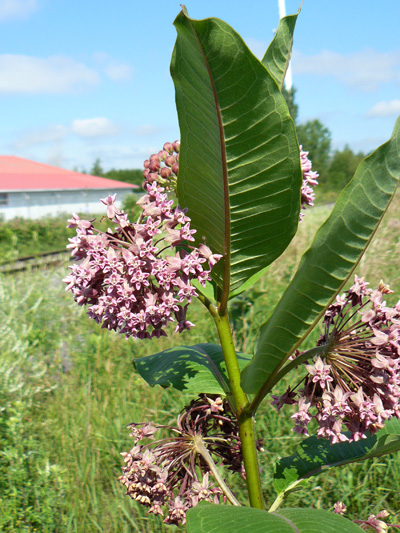
Distribution and localisation map
Common Milkweed
Asclepias syriaca
Asclépiade commune
- Uses
- Presentation
- Identification
- Names
- Etymology
- Uses
- Ethnobotany
- Classification
Edibility :
Although slightly toxic raw, for man, the young shoots, leaves, fruits and flower buds are edible when cooked.Considering its very low toxicity one could also eat the same parts raw if necessary.Animals :
Home and fed many insects of which the Monarch caterpillar who, while feeding, concentrate the toxins and becomes toxic in turn, an excellent means of defense.The Monarch caterpillar never eat enough leaves to endanger the plant because if it did so it could die poisoned because more the caterpillar eats fast, more the plant produce toxin.Cultivation
Considered mainly as a weed in America,the Common Milkweed is sometimes cultivated as ornamental plant in Europe.













Fritters of Milkweed

Milkweed shoots




